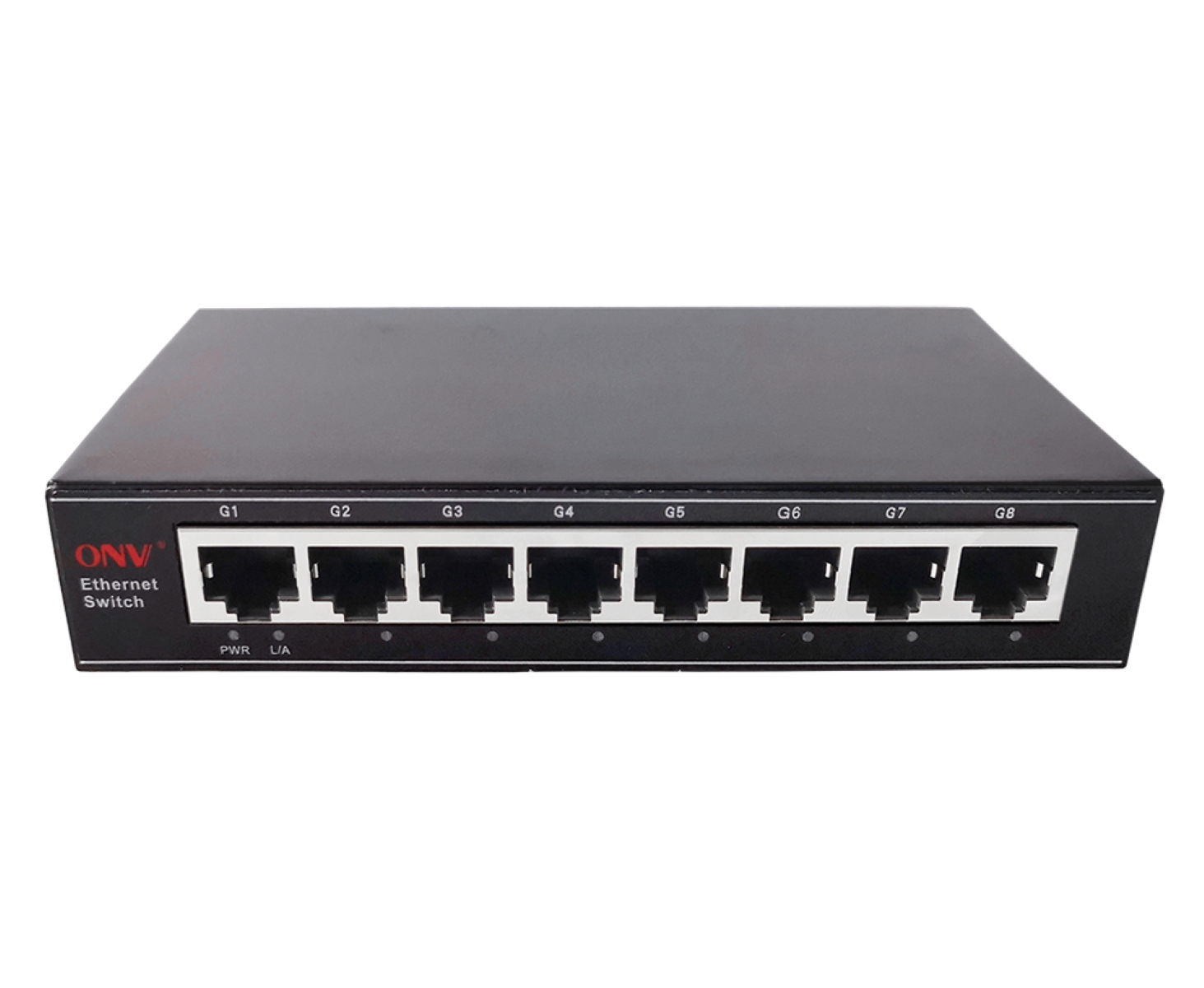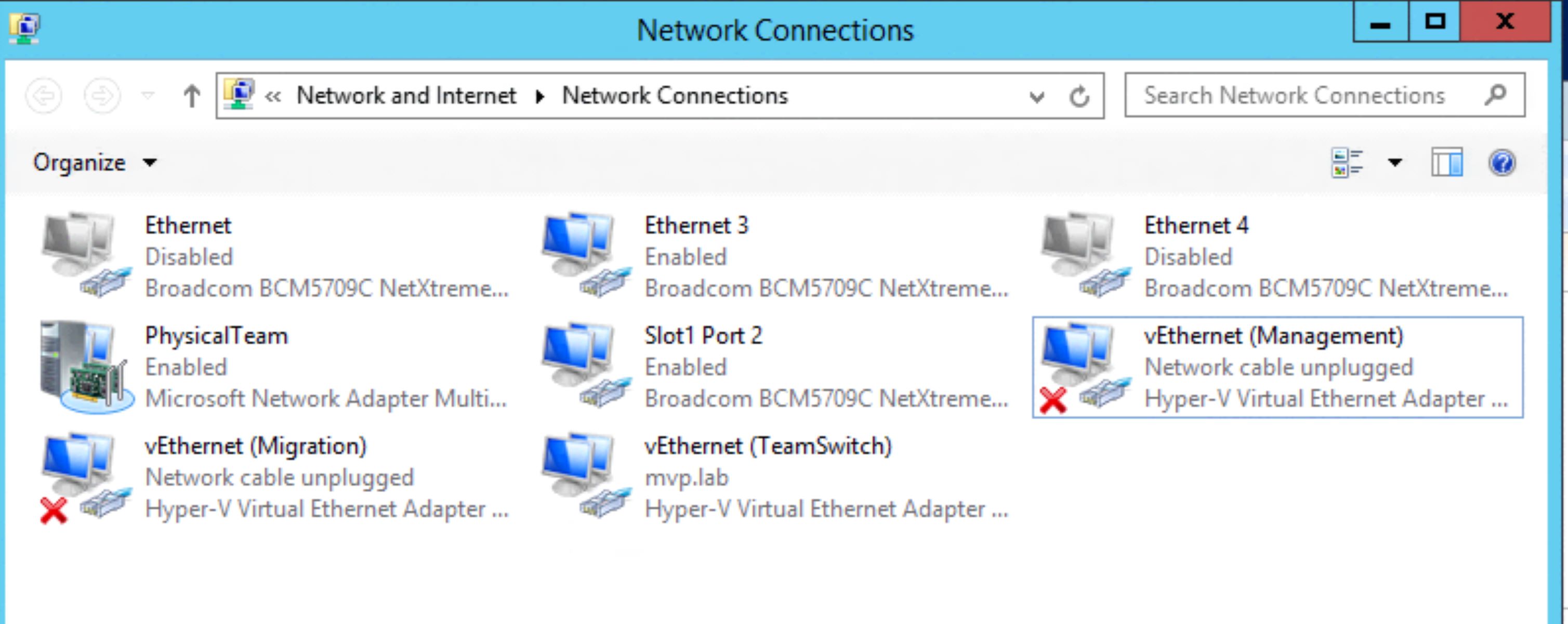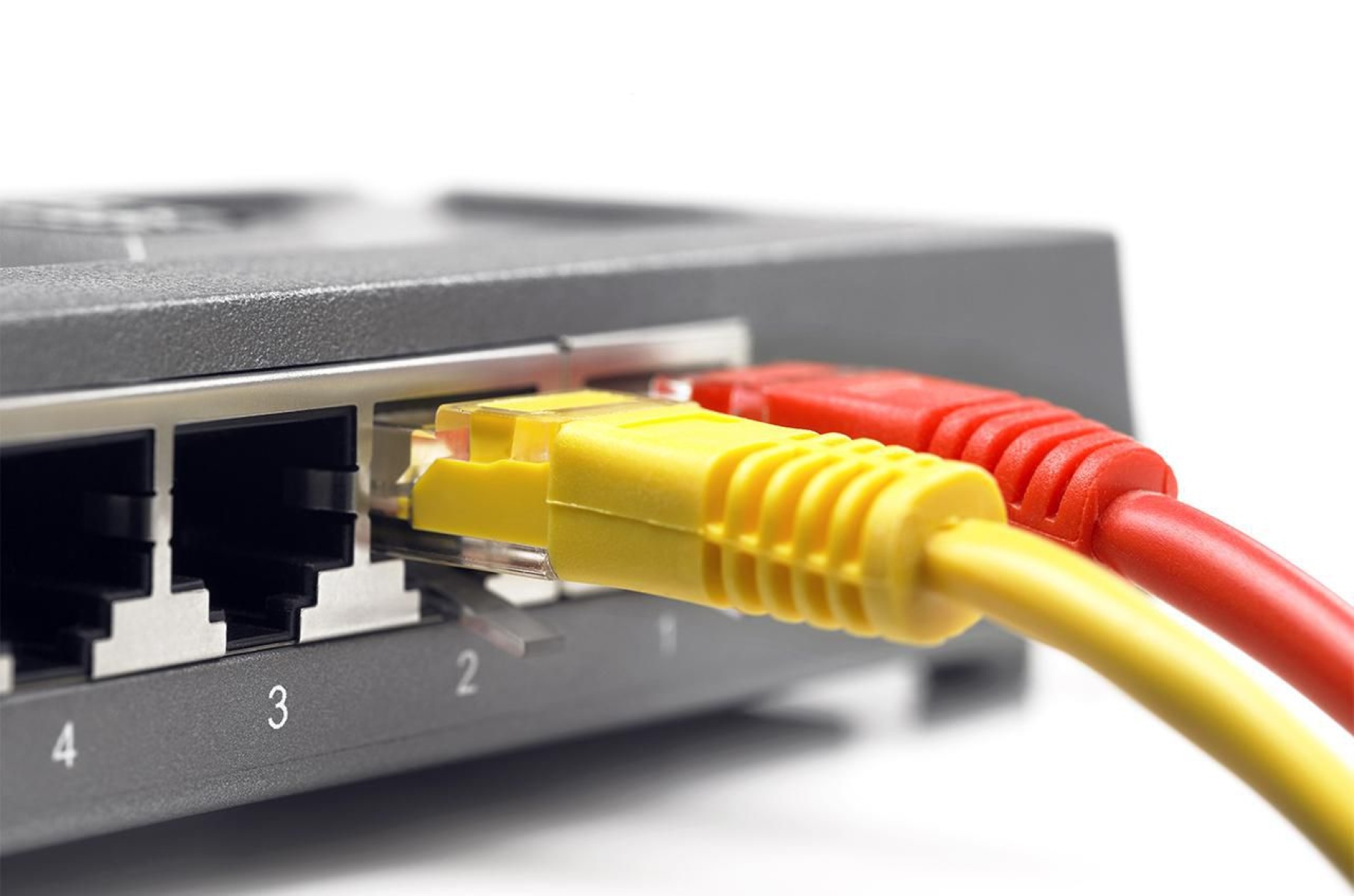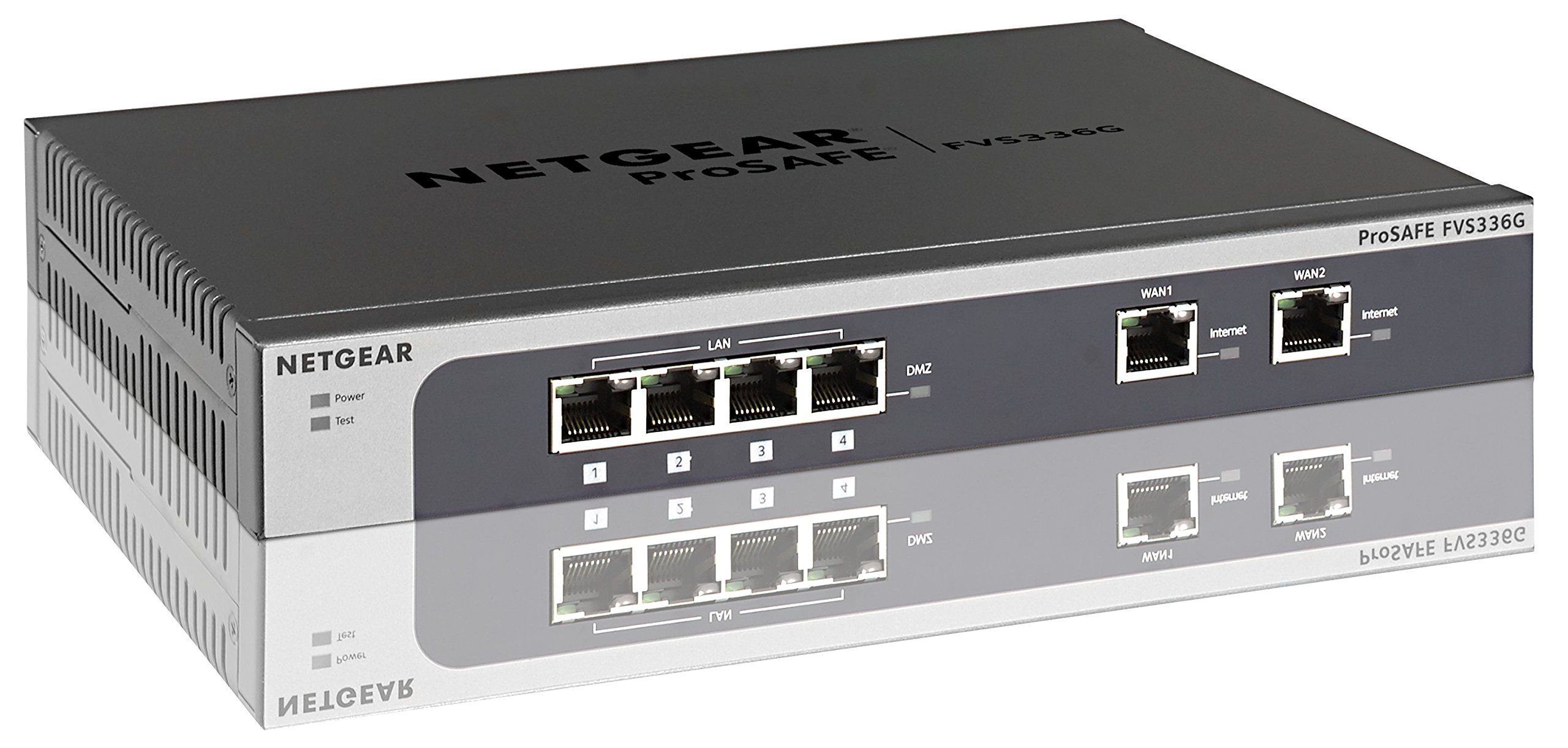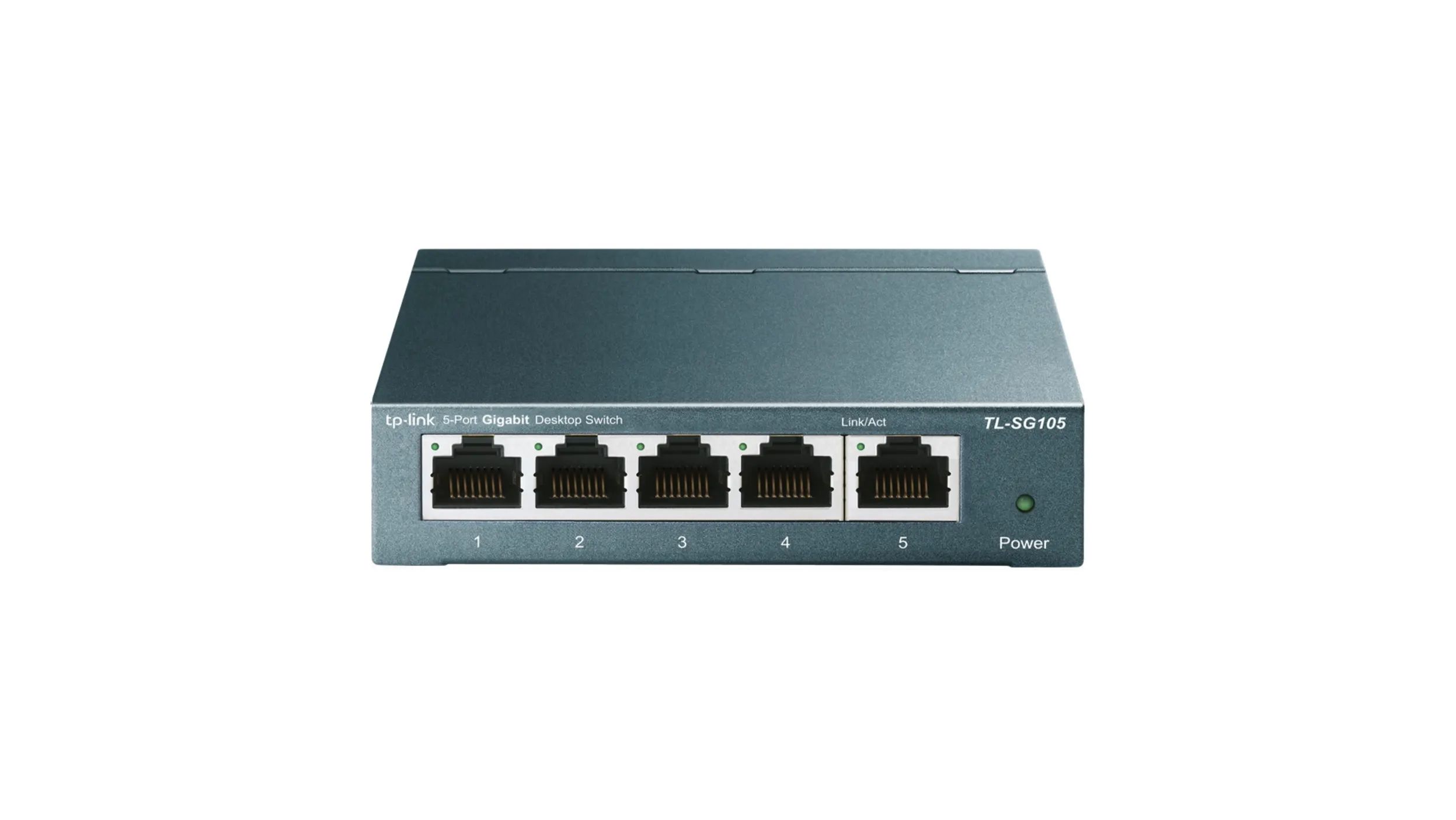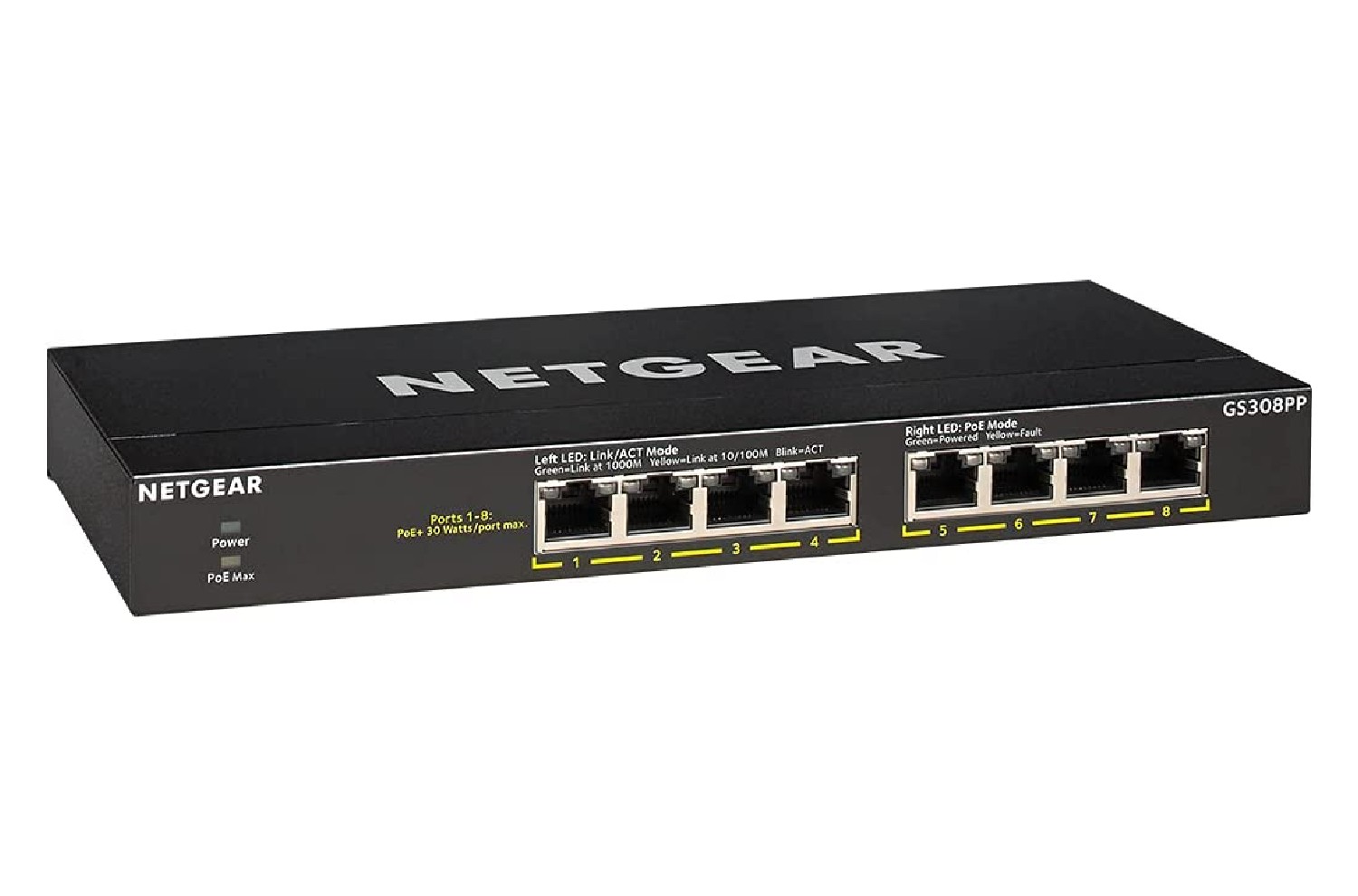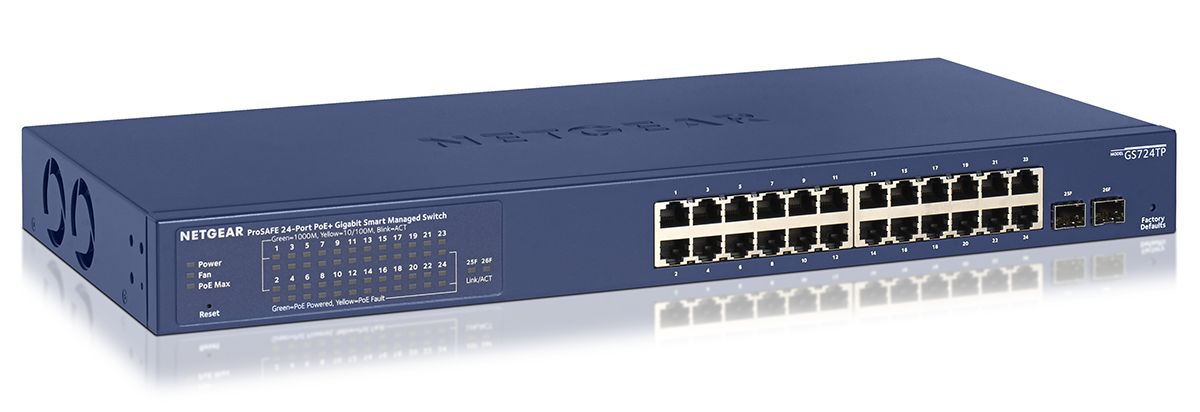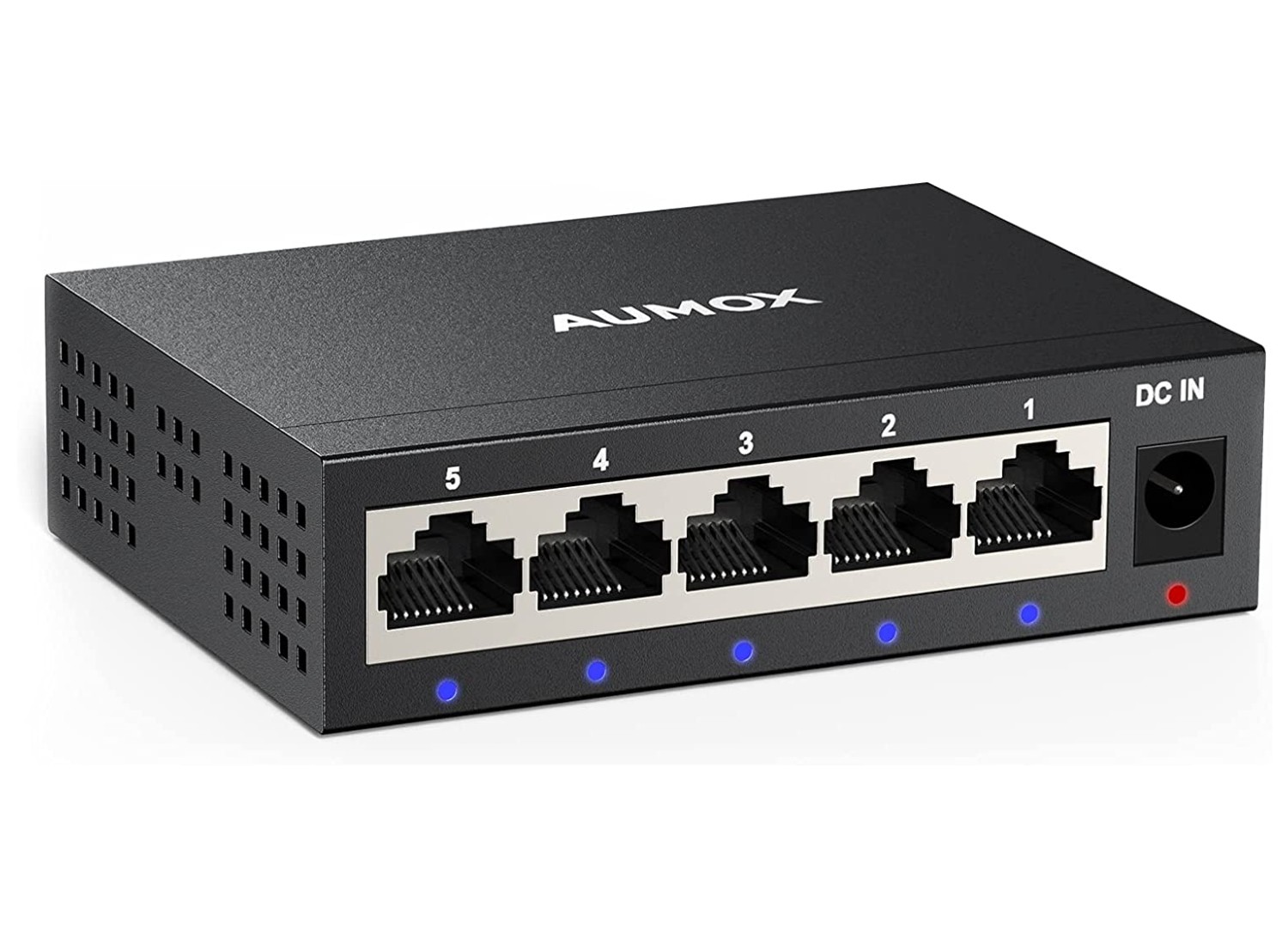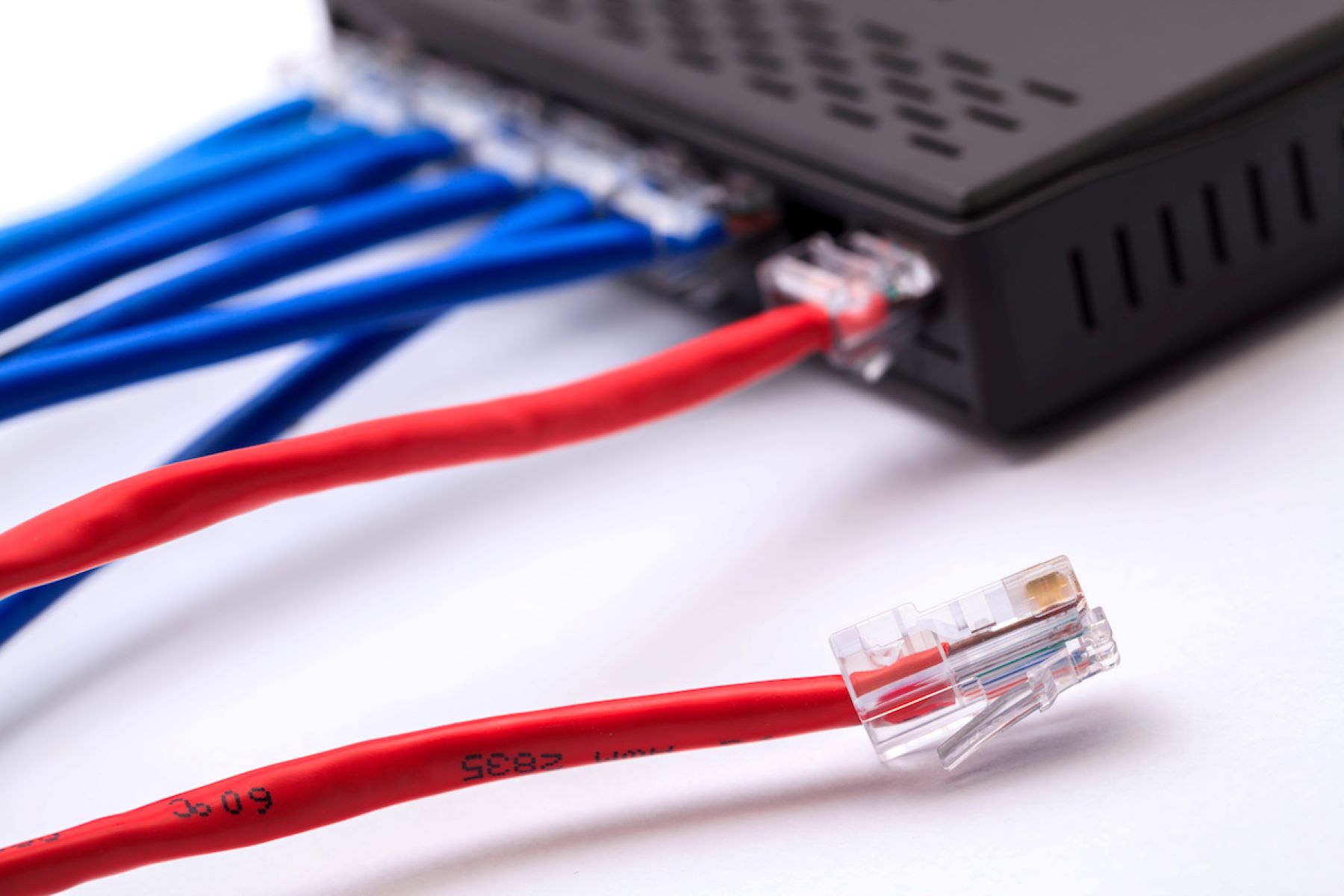Introduction
Welcome to the world of networking, where connectivity is key and data transfer is essential. In today’s fast-paced digital landscape, having a reliable and efficient network infrastructure is crucial for smooth operations and seamless communication. One of the key components that play a vital role in network connectivity is a managed ethernet switch.
Whether you are a small business owner, an IT professional, or simply someone interested in understanding networking technologies, it is important to grasp the concept and benefits of a managed ethernet switch.
A managed ethernet switch is a networking device that allows for the connection of multiple devices within a Local Area Network (LAN) and enables the efficient transfer of data across the network. Unlike unmanaged switches, which operate at a basic level with minimal configuration options, managed switches offer advanced functionality, control, and customization capabilities.
In this article, we will delve deeper into the world of managed ethernet switches, exploring how they work, their benefits, key features to look for, and the difference between managed and unmanaged switches. We will also discuss various use cases where managed switches excel and important considerations to keep in mind when choosing the right switch for your network needs.
By the end of this article, you will have a solid understanding of managed ethernet switches and be well-equipped to make informed decisions regarding your network infrastructure.
What Is a Managed Ethernet Switch?
A managed ethernet switch is a sophisticated networking device that allows for the efficient organization and control of data transfer within a Local Area Network (LAN). Unlike unmanaged switches, which operate in a plug-and-play fashion with limited configurability, managed switches offer advanced features and functionalities that can be tailored to meet specific network requirements.
At its core, a managed switch serves as a central hub for all connected devices within a network, facilitating communication and data transfer between them. By intelligently managing network traffic, a managed switch ensures that data packets are delivered to their intended destinations in the most efficient and secure manner.
One of the key differentiators of a managed switch is its ability to be configured and monitored. Through a web-based interface or specialized software, network administrators can access and customize various settings of the switch, such as VLANs (Virtual Local Area Networks), QoS (Quality of Service) parameters, and security protocols.
This level of control and flexibility allows for the optimization of network performance, ensuring that critical traffic receives priority, and potential bottlenecks are minimized. Additionally, managed switches often support advanced management features, such as SNMP (Simple Network Management Protocol), which enables remote monitoring and troubleshooting of the network.
Furthermore, a managed ethernet switch provides enhanced security features to protect the network from unauthorized access and potential threats. These features include port-based access control, MAC address filtering, and 802.1X authentication, among others. With the ability to segment the network into different VLANs, administrators can isolate sensitive data and restrict access to specific groups or individuals.
Overall, a managed switch offers greater control, scalability, and security compared to unmanaged counterparts. While the initial setup and configuration may require more advanced technical knowledge, the benefits of a managed switch make it an ideal choice for businesses and organizations that prioritize network performance and security.
How Does a Managed Ethernet Switch Work?
To understand how a managed ethernet switch works, it’s helpful to have a basic understanding of Ethernet technology. Ethernet is a widely-used networking standard that allows for the transmission of data packets between devices in a Local Area Network (LAN).
A managed switch acts as a central hub within a LAN, connecting multiple devices, such as computers, servers, printers, and IP phones. Each device is connected to an individual port on the switch, which serves as a pathway for data transmission.
When a device sends data to another device within the same network, it encapsulates the information into a data packet. These packets contain the source and destination addresses, as well as the actual data being transmitted. The managed switch analyzes the destination address on each packet and uses a process called switching or forwarding to determine the appropriate port to send the packet to.
Managed switches have a built-in forwarding table, sometimes referred to as a MAC (Media Access Control) table or a CAM (Content Addressable Memory) table. This table stores the MAC addresses of all connected devices and their corresponding ports. When a packet arrives at the switch, it examines the destination MAC address and consults the forwarding table to find the corresponding port.
If the destination MAC address is already in the forwarding table, the switch forwards the packet directly to the appropriate port. However, if the MAC address is not present in the table, the switch relies on a process called flooding or broadcasting. In this case, the switch sends the packet to all connected ports except for the one it arrived on, in order to reach any potential destination devices.
Managed switches also support VLANs (Virtual Local Area Networks), which allow for the segmentation of the network into separate broadcast domains. VLANs enable administrators to logically group devices based on specific criteria, such as department, function, or security level. This segmentation helps to enhance network performance and security by isolating traffic and preventing unnecessary broadcast traffic from reaching devices outside of the VLAN.
Additionally, managed switches offer advanced management features that allow network administrators to configure and monitor various settings. These features include Quality of Service (QoS) controls, which prioritize certain types of traffic over others to ensure consistent and reliable performance for time-sensitive applications.
In summary, a managed ethernet switch works by intelligently forwarding data packets between devices within a LAN based on their MAC addresses. It utilizes a forwarding table to determine the appropriate port for each packet and supports advanced features such as VLANs and QoS to optimize network performance and security.
Benefits of Using a Managed Ethernet Switch
Using a managed ethernet switch comes with several advantages that make it a preferred choice for businesses and organizations that require a robust and scalable network infrastructure. Here are some of the key benefits:
- Advanced Network Control: Managed switches offer granular control over network configurations and settings. Network administrators can easily configure VLANs, set up access control lists, and implement Quality of Service (QoS) policies to prioritize critical traffic. This level of control allows for better network optimization and performance.
- Enhanced Security: Managed switches provide advanced security features to protect the network from unauthorized access and potential threats. With features like port-based access control and MAC address filtering, administrators can restrict access to specific ports or devices. Additionally, VLANs can be used to isolate sensitive data and prevent unauthorized users from accessing it.
- Improved Performance: By utilizing QoS capabilities, managed switches can prioritize critical data traffic, such as VoIP calls or video streaming, over less time-sensitive traffic. This ensures that important applications and services receive the necessary bandwidth and reduces the likelihood of performance slowdowns or bottlenecks.
- Remote Management: Managed switches often support remote management, allowing network administrators to monitor and configure the switch from a central location. This saves time and effort by eliminating the need for on-site management, making it ideal for organizations with multiple locations or geographically dispersed networks.
- Greater Scalability: Managed switches are designed to handle larger networks and accommodate future growth. They offer features like link aggregation, which allows multiple ports to be combined to increase bandwidth, and support for spanning tree protocol, which helps prevent network loops and improves network reliability. These capabilities make managed switches suitable for businesses with expanding network requirements.
- Network Visibility and Troubleshooting: Managed switches provide detailed network statistics and monitoring capabilities, giving administrators insight into network performance and potential issues. By analyzing port utilization, error rates, and other metrics, administrators can quickly identify and resolve network problems, ensuring a stable and efficient network.
Overall, using a managed ethernet switch provides the flexibility, security, and control needed to build and maintain a reliable network infrastructure. Whether it’s optimizing performance, enhancing security, or supporting future growth, the benefits of utilizing a managed switch make it a valuable investment for any organization.
Key Features to Look for in a Managed Ethernet Switch
When selecting a managed ethernet switch for your network, it’s important to consider a few key features that will ensure optimal performance and functionality. These features can vary depending on your specific network requirements, but here are some essential ones to look for:
- Number of Ports: Consider the number and type of ports required for your network. Ensure that the switch has enough ports to accommodate current and future devices, such as computers, servers, printers, and IP phones. Additionally, look for switches that offer a mix of Gigabit and Fast Ethernet ports to support different data transfer needs.
- PoE (Power over Ethernet) Support: If you have devices such as IP cameras, wireless access points, or VoIP phones that require power, consider a managed switch with PoE support. PoE eliminates the need for separate power cords by delivering power and data over the same Ethernet cable, simplifying installation and reducing clutter.
- Switching Capacity and Throughput: The switching capacity and throughput of a switch determine its ability to handle data traffic. Look for switches with sufficient capacity to handle the expected amount of traffic in your network. Higher switching capacity ensures smoother data flow and reduces the likelihood of congestion or performance issues.
- QoS (Quality of Service) Prioritization: QoS allows you to prioritize certain types of traffic over others. If your network handles time-sensitive applications like VoIP or video streaming, prioritize switches that support QoS. This ensures that critical traffic receives the necessary bandwidth and minimizes latency or disruptions.
- VLAN (Virtual Local Area Network) Support: VLANs enable you to segment your network logically, improving security and performance. Look for switches that support VLANs, allowing you to group devices based on departments, functions, or security levels. This helps isolate traffic and restrict access to sensitive information.
- Management Capabilities: Consider the management capabilities of the switch. Look for a user-friendly web-based interface or specialized software that allows for easy configuration, monitoring, and troubleshooting. Remote management capabilities are also valuable, allowing administrators to access the switch from anywhere, saving time and effort.
- Security Features: Ensure the switch offers robust security features to protect your network. Look for features such as port-based access control, MAC address filtering, and 802.1X authentication. These features help prevent unauthorized access and protect against potential threats.
- Redundancy and Reliability: Consider switches that offer redundancy features such as link aggregation, spanning tree protocol, and redundant power supply options. These features ensure network reliability and minimize downtime in the event of a link failure or power outage.
By carefully considering these key features, you can select a managed ethernet switch that meets your network requirements and provides the necessary functionality, security, and scalability for your organization.
Managed vs. Unmanaged Ethernet Switches: What’s the Difference?
When it comes to ethernet switches, there are two main categories: managed and unmanaged switches. Understanding the differences between these two types is crucial in selecting the right switch for your network needs. Let’s explore the key distinctions:
Configuration and Control: The primary difference between managed and unmanaged switches lies in their configuration and control capabilities. Unmanaged switches operate in a plug-and-play fashion, requiring no configuration. They are designed for basic connectivity and do not offer customization options. Managed switches, on the other hand, provide advanced configuration capabilities, allowing network administrators to optimize performance, security, and functionality.
Visibility and Monitoring: Managed switches provide detailed network visibility and monitoring features. Network administrators can access comprehensive statistics, such as port utilization, error rates, and traffic patterns, to troubleshoot issues and ensure optimal performance. Unmanaged switches lack these monitoring features, making it challenging to identify and address network problems efficiently.
Security Features: Managed switches offer robust security features to protect the network. These features may include port-based access control, MAC address filtering, and VLAN segmentation, among others. Unmanaged switches, on the other hand, have limited or no security features, leaving the network more vulnerable to unauthorized access and potential threats.
Scalability and Flexibility: Managed switches are built to handle larger networks and accommodate future growth. They offer advanced features like link aggregation and spanning tree protocol to improve scalability, redundancy, and network reliability. Unmanaged switches are typically limited in their scalability and lack these advanced features, making them more suitable for smaller, less complex networks.
Cost: Unmanaged switches are generally more cost-effective compared to managed switches. They are simpler in design and functionality, making them an affordable choice for basic networking requirements. Managed switches, with their advanced features and capabilities, come at a higher price point. However, the increased cost is often justified by the added control, security, and performance optimization they provide.
Technical Expertise: Setting up and managing a managed switch requires more technical knowledge and expertise. It involves configuring VLANs, QoS parameters, security settings, and monitoring the network. Unmanaged switches, on the other hand, require minimal technical expertise since they operate in a plug-and-play manner. This makes unmanaged switches more accessible for non-technical users or small businesses with limited IT resources.
Ultimately, the decision between a managed and unmanaged switch depends on your network requirements, budget, and technical capabilities. If you need advanced control, security, and scalability, a managed switch is the way to go. However, for smaller networks with simple connectivity needs and a limited budget, an unmanaged switch may suffice.
Use Cases for Managed Ethernet Switches
Managed ethernet switches are highly versatile and can be applied to various network setups and industries. Here are some common use cases where managed switches excel:
- Enterprise Networks: Managed switches are an ideal choice for large enterprises with complex network infrastructures. They provide control, scalability, and advanced features like VLAN segmentation and QoS prioritization. These capabilities allow network administrators to efficiently manage network traffic, optimize performance, and ensure secure communication between departments and locations.
- Education Institutions: Schools, colleges, and universities often have extensive network requirements due to multiple classrooms, computer labs, and administrative areas. Managed switches enable IT administrators to create separate VLANs for different departments, ensuring data privacy and security. QoS capabilities guarantee reliable and uninterrupted access to online learning platforms, video streaming, and other educational resources.
- Healthcare Facilities: Hospitals, clinics, and healthcare facilities handle sensitive patient data and require secure and reliable connectivity. Managed switches with advanced security features, such as port-level access control and MAC address filtering, help protect patient information. Additionally, VLAN segmentation is vital for separating patient data from administrative networks, reducing the risk of unauthorized access or breaches.
- Industrial Networks: Industrial environments, such as manufacturing plants and production facilities, often have demanding network requirements. Managed switches can handle the heavy data traffic generated by machinery, monitoring systems, and other industrial devices. They also support redundant links and power supplies, ensuring high availability and reducing the risk of downtime.
- Hospitality and Retail: Managed switches play a vital role in hospitality and retail sectors, where guests and customers rely on a stable and secure network connection. These switches enable network administrators to prioritize guest Wi-Fi access, ensuring a seamless browsing experience. VLANs are useful for separating guest networks from internal systems, protecting sensitive data, and preventing unauthorized access.
- VoIP and Video Conferencing: Voice over Internet Protocol (VoIP) and video conferencing applications have specific network requirements to maintain quality and low latency. Managed switches with QoS capabilities can prioritize VoIP and video traffic, reducing delays and providing smooth communication. Additionally, features like Power over Ethernet (PoE) support simplify the deployment of VoIP phones and video conferencing equipment.
- Multi-site Networks: Organizations with multiple locations or sites benefit from the remote management capabilities of managed switches. With centralized administration, network administrators can configure, monitor, and troubleshoot switches across different sites from a single location, reducing travel expenses and saving time. It ensures consistency in network configurations and simplifies network maintenance.
These are just a few examples of the many industries and use cases where managed switches shine. The versatility, customization, and control offered by managed switches make them indispensable in creating reliable, secure, and high-performance network infrastructures across various sectors.
Considerations When Choosing a Managed Ethernet Switch
Choosing the right managed ethernet switch for your network requires careful consideration of various factors. Here are some key considerations to keep in mind:
- Network Size and Requirements: Assess the size and complexity of your network. Consider the number of devices, the amount of data traffic, and the future scalability needs of your network. This will help determine the required number of ports, switching capacity, and other specifications needed for optimal network performance.
- Management Interface: Evaluate the usability and functionality of the management interface of the switch. Look for switches with intuitive web-based interfaces or specialized software that allow for easy configuration, monitoring, and troubleshooting. Remote management capabilities can be advantageous, providing the flexibility to manage the switch from anywhere.
- Security Features: Security should be a top priority. Consider the security features offered by the switch, such as port-based access control, MAC address filtering, and support for security protocols like 802.1X. Ensure the switch provides the necessary measures to protect your network from unauthorized access, data breaches, and potential threats.
- Performance Optimization: Evaluate the performance-enhancing features of the switch. Look for switches that offer Quality of Service (QoS) capabilities, which enable the prioritization of specific types of traffic. This ensures that critical applications, like VoIP or video conferencing, receive the necessary bandwidth for seamless performance.
- Scalability and Redundancy: Consider your future network expansion plans. Look for switches with features like link aggregation and spanning tree protocol to ensure scalability and redundancy. These features allow for increased bandwidth and network resilience, minimizing the risk of single points of failure.
- Compatibility and Interoperability: Ensure that the managed switch is compatible with your existing network infrastructure. It should support the necessary networking standards (e.g., Ethernet, Fast Ethernet, Gigabit Ethernet) and protocols (e.g., TCP/IP) to seamlessly integrate into your network environment. Compatibility is crucial for smooth interoperability and efficient data transfer.
- Power over Ethernet (PoE) Support: If you have devices that require power, such as IP cameras or wireless access points, consider a managed switch with PoE support. This eliminates the need for separate power supplies and simplifies installation, reducing costs and cable clutter.
- Reliability and Warranty: Assess the reliability and warranty of the switch. Look for switches from reputable manufacturers with a track record of quality and reliability. Consider the warranty period offered by the manufacturer, as it provides assurance and support in case of any defects or issues with the switch.
- Budget: Finally, consider your budget and the cost-effectiveness of the switch. Managed switches generally come at a higher price point compared to unmanaged switches, but the added functionality and control justify the cost for organizations with specific networking needs. Balance your budget constraints with the features and performance required for your network.
By carefully considering these factors, you can select a managed ethernet switch that aligns with your network requirements, meets your performance expectations, and provides the necessary scalability, security, and management capabilities for your organization.
Conclusion
Managed ethernet switches offer a wide range of benefits, including advanced control, enhanced security, and improved network performance. With their configurability, scalability, and management capabilities, they provide the flexibility and functionality necessary for modern network infrastructures.
When choosing a managed switch, it is important to carefully consider your network requirements, such as the size and complexity of your network, security needs, and future scalability plans. Assessing the management interface, security features, performance optimization capabilities, and compatibility with your existing infrastructure is crucial for selecting the right switch.
Managed switches find applications across various industries, such as enterprise networks, education institutions, healthcare facilities, and hospitality and retail sectors. They excel in environments that demand high levels of control, security, and scalability.
While managed switches generally come at a higher price point compared to unmanaged switches, the added benefits and capabilities make them a valuable investment. They empower network administrators to optimize performance, protect sensitive data, prioritize critical traffic, and monitor network activity more effectively.
In conclusion, choosing a managed ethernet switch that suits your network needs is crucial for maintaining a reliable, secure, and high-performance network infrastructure. By considering the key features discussed in this article and aligning them with your specific requirements, you can make an informed decision and ensure a successful implementation of a managed switch in your network.







